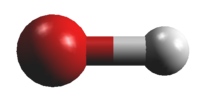|
The entry is based on a combined fit of field free
data of OH+, OD+, and
18OH+.
The N = 2 – 1 transition
frequencies of OD+ were taken
from
(1) P. Verhoeve, J. P. Bekooy, W. L. Meerts,
J. J. ter Meulen, and A. Dymanus,
1986, Chem. Phys. Lett. 125, 286.
Infared transitions of 18OH+
with N" between 0 and 10 were taken
from
(2) M. Gruebele, E. Keim, A. Stein,
and R. J. Saykally,
1988, J. Mol. Spectrosc. 131, 343.
Details of the OH+ fit have been
published in
(3) H. S. P. Müller, F. Schlöder,
J. Stutzki, and G. Winnewisser,
2005, J. Mol. Struct. 742, 215.
The N = 1 – 0 transition
frequencies were taken from
(4) J. P. Bekooy, P. Verhoeve, W. L. Meerts, and A. Dymanus,
1985, J. Chem. Phys. 82, 3868.
The N = 13 – 12 transition was reported in
(5) D.-L. Liu, W.-C. Ho, and T. Oka,
1987, J. Chem. Phys. 87, 2442.
Vibration-rotation transitions up to v =
5 – 4 were also included in the fit.
These were published in
(6) B. D. Rehfuss, M.-F. Jagod, L.-W. Xu, and T. Oka,
1992, J. Mol. Spectrosc. 151, 59.
The predictions should be viewed with caution
throughout, even more so as the predicted
uncertainties are somewhat optimistic.
Uncertainties in the fine structure splitting
are probably most important for the
N = 1 – 0
transition.
The dipole moment was assumed to agree with that
of the main isotopolog, see e017501.cat.
|
